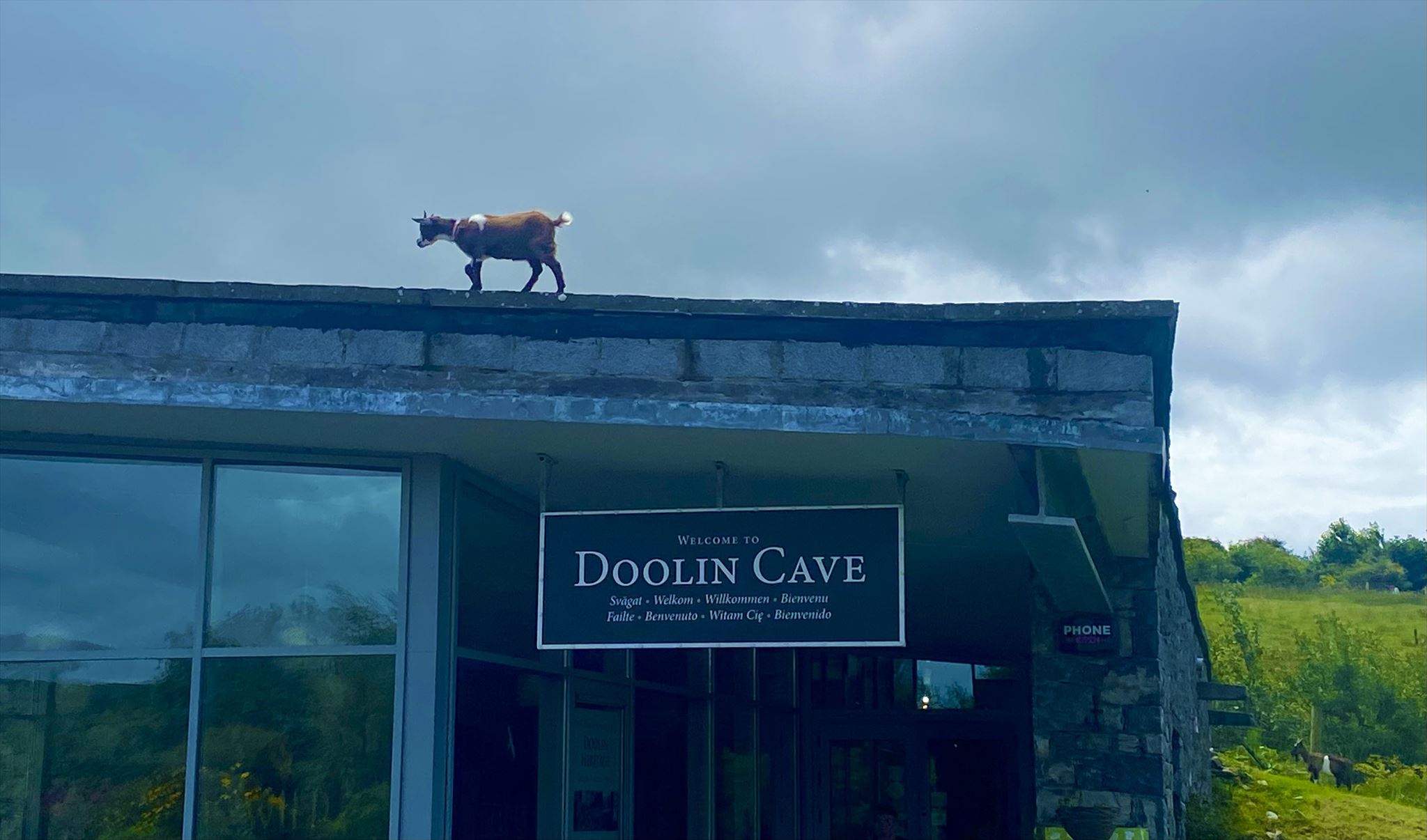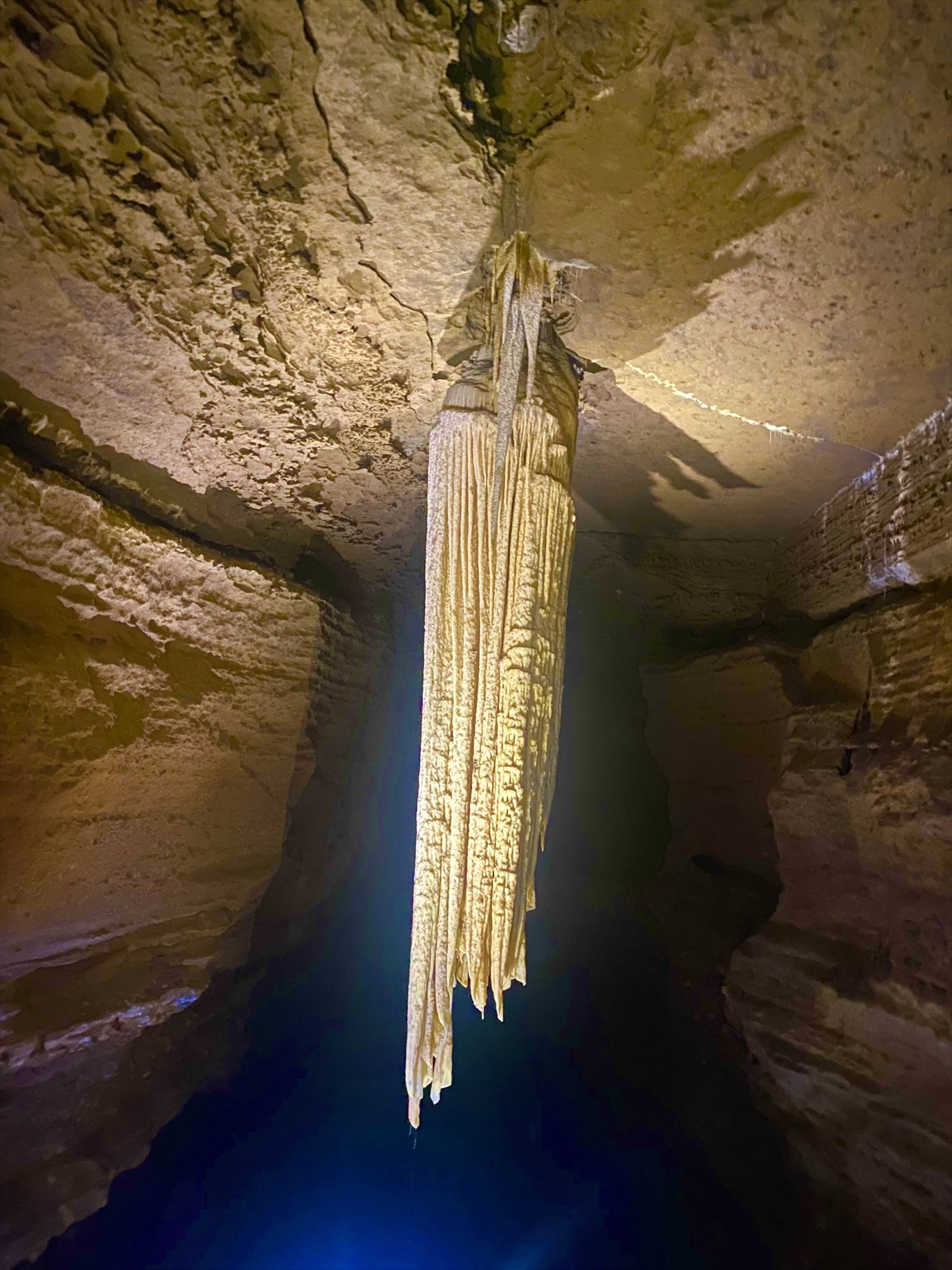DOOLIN CAVE


The Doolin Cave is a great place to visit with your family. The cave is spectacular and there are many interesting rock formations that you will see inside. The terrain isn't too challenging and the guided tour lasts about 45 minutes with lots of time to stop and take photos. The Great Stalactite is the largest stalactite in Europe and the only one of its kind in Ireland!!

The Doolin Cave is open nearly every day year-round and it is privately owned and operated. There is an admission fee to get into the cave and you will be given a hard hat to wear on your guided tour as the tunnels are low in a few places. Handrails are located at many locations inside the cave to assist you on your hike and there are some informational signs along the way. There is also a restaurant and a gift shop.

Cave Formation
A cave is a natural void in the Earth often formed by the weathering of rock. Small openings which extend a relatively short distance into the rock are called exogene caves but if the cave extends further underground than the width of the opening it is an endogene cave. There are 8 main types of caves: solutional, primary, sea/littoral, corrasional/erosional, glacier, fracture, talus and anchialine. Solutional caves or karst caves are the most common cave type and form in rock that is soluble; most occur in limestone like the Doolin Cave. Limestone dissolves under the action of rainwater and groundwater containing carbon dioxide and naturally occurring organic acids. The limestone accumulated 360 to 335 million years ago when this area was covered by the sea and as marine animals, plants and coral died they accumulated and were compacted to form thick limestone beds.

Stalactite Formation
The most common stalactites are speleothems, which occur in limestone caves. They form when calcium carbonate and other minerals are deposited from mineralized water solutions. Limestone is the chief form of calcium carbonate which is dissolved by water that contains carbon dioxide, forming a calcium bicarbonate solution.
This solution travels through the rock until it reaches an edge and if this is on the roof of a cave it will drip down. When the solution comes into contact with air, the chemical reaction that created it is reversed and particles of calcium carbonate are deposited.
An average growth rate is 0.13 mm (0.0051 inches) a year. The drip rate must be slow enough to allow the carbon dioxide to leave the solution as a gas, resulting in deposition of calcium carbonate on the stalactite. If the drip rate is too fast then there won’t be enough time for degassing to occur and the solution, still carrying most of the calcium carbonate, falls to the cave floor. Degassing occurs there instead and the calcium carbonate is deposited forming a stalagmite.
In the picture below you can see a close-up photo of the Great Stalactite. Like all limestone stalactites, it started with a single drop of water depositing a ring of calcite and has continued to grow over the last 500,000 years or so. Eventually these rings formed a 4-5 mm in diameter hollow tube known as a “soda straw” stalactite. Eventually it became plugged with debris and then mineral rich water began flowing over the outside depositing more calcite and creating the cone shape. It is not a solid form though as it is made up of a series of calcite folds called “curtains” and there are cavities between the folds of the curtains. It is estimated to weigh 10 tonnes.

The Second Chamber
In Doolin Cave, bell formations can be found in the roof of the second chamber. They occur when the force of swirling water and sediment flowing through the cave carve out a bell like shape in the roof. The picture below shows some of the smaller “straws” you will see in the second chamber as well as water running through the cave. You will also see flowstone which is a mineral deposit on the walls of the cave. Flowstone is usually white or translucent but may be stained various colours by minerals dissolved in the water. There are also fossilised remains of sea creatures in the 2nd chamber.

To log this Earthcache, e-mail or message answers to the following questions to the cache owner and if possible please post a photo.
Question 1:
- Describe the Great Stalactite in the cave in terms of colour, appearance and length.
- Is the Great Stalactite made of rock that is igneous, sedimentary or metamorphic?
Question 2: Is the Great Stalactite still getting longer? What evidence did you see to support this?
Question 3: Describe the straws you saw in the 2nd chamber in terms of length and appearance.
Question 4: Is this cave active or not and why do you think so?
Question 5: (Optional) Take a photograph of you, your GPSr, a trackable, or some personal item inside the cave or at the cave entrance.
Logs will be deleted if an e-mail containing the correct answers isn't received within a reasonable period of time. Also, please be respectful of the area when you are visiting. Thanks!! I hope you will enjoy your visit to Doolin Cave and also learn something in the process!
Acknowledgements:
Thanks goes out to the management and staff of Doolin Cave (Pol An Ionáin) for approving this earth cache!
References:
“Doolin Cave.” www.doolincave.ie/.. N.p., n.d. Web. 10 July 2023.
Emily Rodriguez. “Stalactite & Stalagmite.” Encyclopædia Britannica, Encyclopædia Britannica, Inc., 2 Aug. 2023, www.britannica.com/geography/cave.
"Cave." Wikipedia. Wikimedia Foundation, n.d. Web. 14 July 2023.
"Stalactite." Wikipedia. Wikimedia Foundation, n.d. Web. 18 July 2023.
